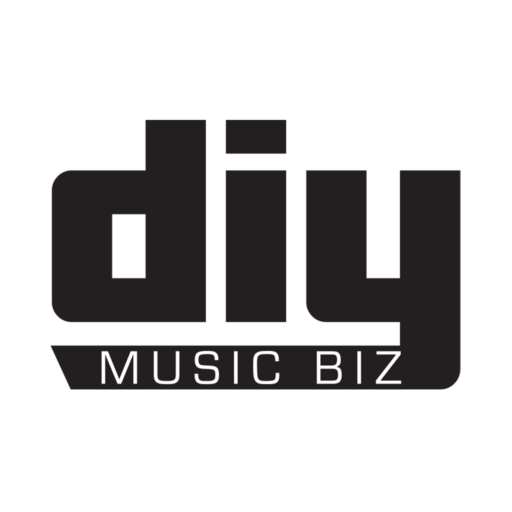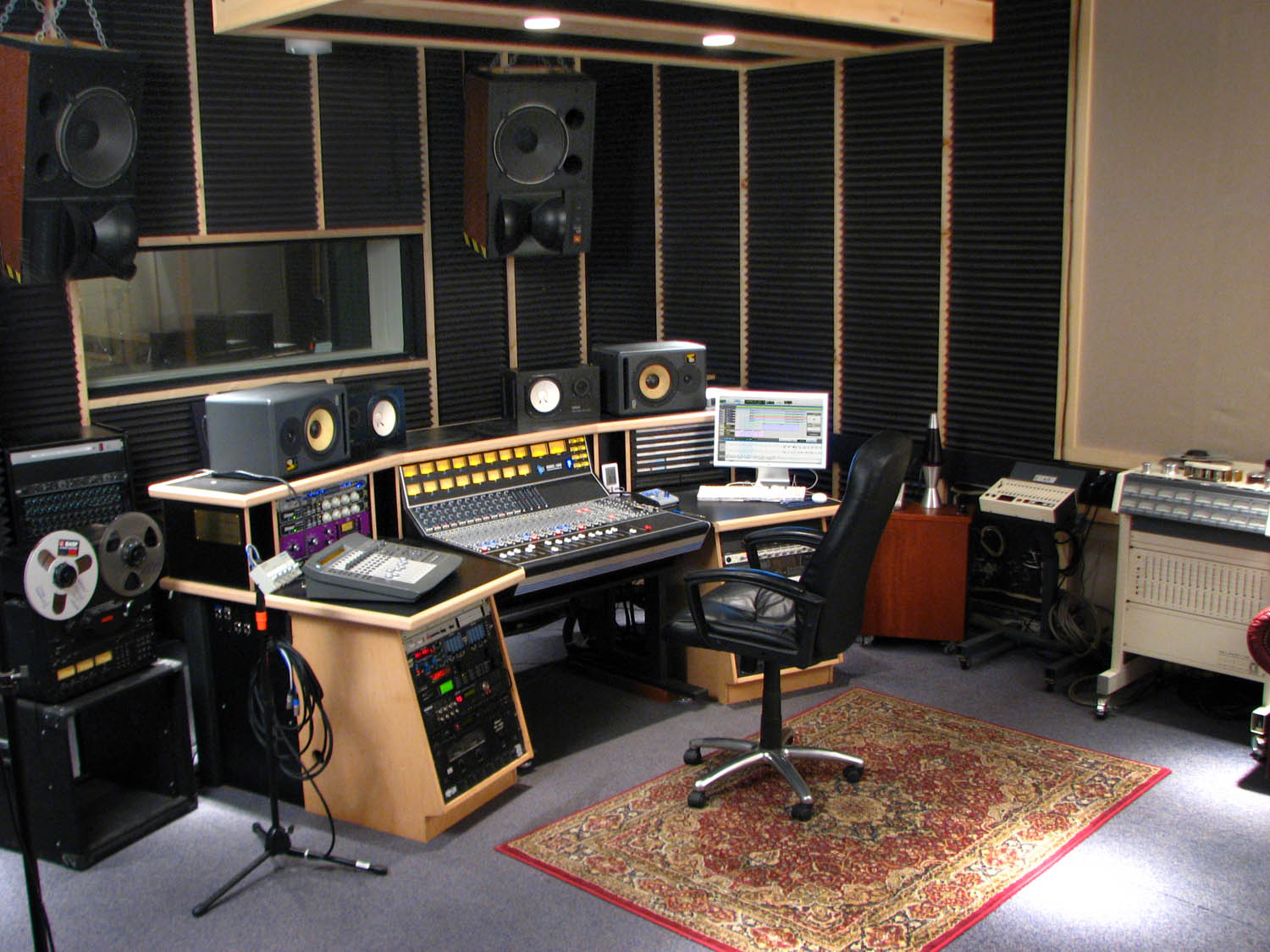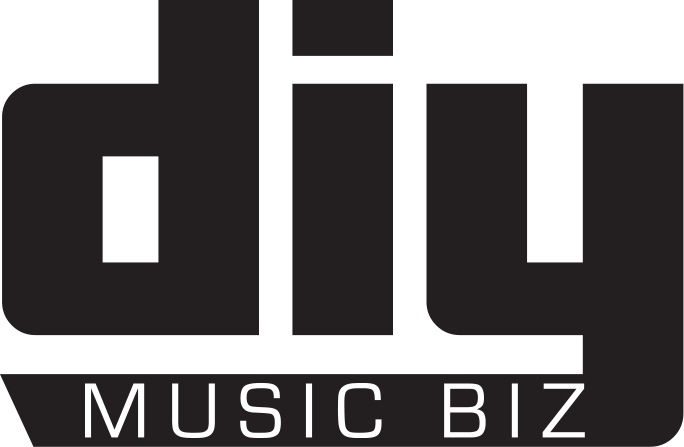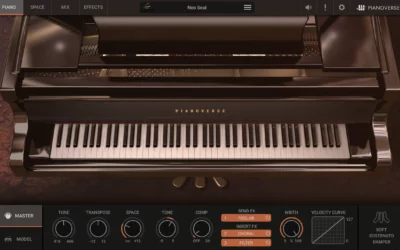Alright, so here I am, back with the 2nd installment of building a recording studio. If you’ve missed the 1st part don’t worry you can find it here
How To Build A Recording Studio Part 1
I hope you find this post just as beneficial if not more than part 1. Please feel free to leave comments/suggestions and or concerns. So, without further ado let’s pick up where we left off.
6) Studio Workstation (The Studio Desk)
You need a good workstation (desk) to organize your gear on. Now as much as I love ordering online, I tend to go into the store (guitar center) and set up all the gear I have (or something close to it) on desks, just to see how it fits, how it looks, and if it’s going to work for me.
I know, this may seem extreme, and piss some people off, but who cares? This is your future, this is your investment … Make sure the gear you plan to invest in works for you!
I’ve always liked the workstations made by “Studio RTA” & “Studio Trends”. You can find a lot of their desks set up at your local music store.
7) Midi Keyboards -Which One To Use
When picking a midi controller you want to make sure the controller feels nice to the touch. Some people like for the midi controller to feel like a real piano and some don’t. I personally like synth action and semi-weighted controllers over full weighted keys.
The midi controller I’m using right now is an AKAI MPK49. I’ve heard a lot of people claim that this controller has a key malfunction (one of the C keys breaks easily). I’ve owned the Akai MPK49 since 2008, and it works just as well as it did the 1st day I purchased it (flawless).
– You just gotta take care of your gear folks (It’s not rocket science)
Aside from the midi controller feeling good (while playing), it must also have these features: at least 49keys, pitch wheel, mod wheel, and it must be velocity-sensitive – Velocity sensitivity is a must!
Now, let me just say that the midi controller doesn’t have to be 49keys, (get what you can afford) but it’s what I recommend if you plan on playing a lot of chords, they just have more flexibility than that of a 25key controller.
These midi controllers are fair in price and they get the job done
M-Audio Oxygen 49 Key $99
Maudio Keystudio 49 Key $135
Akai MPK 49 Key $299.99
M-audio Axiom 49 Key $299.99
There are others out there but again, I only list what I’ve personally used. I kept this selection limited with a budget in mind. I wouldn’t fixate on controllers that have a lot of bells and whistles, but if you have the money and feel they will benefit you, then by all means go for it.
8) Cables and Connections/Converters
I remember being in a studio session with a client (bass player). We had 2 hours to get some recording done and 3 hours to hand the project in (not a good spot to be in).
During the recording session, one of the audio cables shorted. No big deal, it happens from to time, but the problem was I DIDN’T HAVE ANOTHER CABLE. I freaked, I was looking all around…no luck. I told the session player that I had to run out to RadioShack and get another cable.
He went into his backpack and pulled out a few and said “always have backups”. It seems minor, but he saved me big time, it was going to take 45 minutes to and back from the nearest hole-in-the-wall radio shack (and that’s in decent traffic!)
I wouldn’t suggest spending any ridiculous amount of money on cables. I’ve seen people spend anywhere from $200.00 to $400 on simple through cables and to be honest, I couldn’t tell them apart from the standard monster cables.
Another issue I ran into was not having connectors, which come in handy for connecting and routing external gear. It’s always good to have RCA,1/4, XLR connection/converters, you just never know what you may run into.
9) Storage Drives & Devices
I can never stress this need enough. I don’t care how long you’ve been recording or how solid you feel you’re computer is, you’ll never be immune to a hard drive failure.
This is the number one thing that will bring a composer/artist or studio owner to tears. There is no excuse for not having work backup on multiple devices. A 1TB drive is $70-$100, flash drives are super affordable and CD’s are dirt cheap. Take my advice and make sure you have your work backup on at least 3 different devices.
If you’re charging people for studio time, and you lose their work you’ll be sued, and they will win. The damages for this aren’t pretty.
So please, take a little of that budget, and put it into storage devices!
10) Microphone Preamps – A Must For Me
I would have mentioned this alongside “microphone selection”, but decided to go with a more modern/feature-packed/bang for buck selection (Audio Interfaces).
I like dedicated mic preamps (channel strips) because they are versatile. Most people use them for recording vocals, but I like using them for the sound character. If you have a good preamp you can use it to get that big studio console sound (that’s so popular).
The mic preamp that I use is the Joe Meek VC6Q. It’s an ugly green unit with a nice warm vintage sound. I think I picked it up when I was 16 or 17 years old and it’s been in my studio since.
I really love dedicated mic preamps for sound processing as well as vocal recording. If you have the money to get a dedicated preamp I’d suggest getting one.
This will not make or break your sound but it does help in the long run.
I’d suggest taking a gander at the following mic preamps:
Studio Projects VTB1 $149.99
Grace M 101 $685
Joe Meek Three Q $249.99
Art Pro MPA II $269
All 4 of the listed preamps will give you a nice sound warm sound. I tried to keep this listing within a reasonable price range.
11) Power Conditioners – Clean Energy/Gear Protection
Really? Clean energy… Did I just go there right now? I know, it sounds stupid, but having clean vs dirty energy can make all the difference in the world when it comes to creating/mixing music.
You want to make sure you are getting the best possible signal throughout your studio. When I 1st started creating music I use to have a horrible ground loop. I didn’t know what it is from or how to stop it. I later found out that the home I lived in was not properly grounded and as a result, I’d have this annoying hum in my monitors. I did learn to work around that but it’s very annoying!
If your home is your recording studio there is a good chance that you have dirty energy flowing through your home. Lamps, Deep freeze, kids TVS, clippers, washer, and dryer, etc ..Then there is a good chance that you have dirty energy in your home.
The best way to clean up energy so you’re not getting a lot of random hisses, hums, and audio artifacts is to get a power conditioner. This filters the energy that goes to your music equipment.
There are different brands of power conditions and the brand I use is Furman. I have a Furman M-8X2, now it does do a little filtering, but it’s acts better as a surge protector. I love this little rack unit because it protects my gear from surge spikes and it was only $60. More expensive conditioners do a better job (just needed to throw that out there)
You might be ok with the one I have or you might need to dump a little more $ into one. It really depends on your situation and living environment, some home studios don’t need much because they don’t run much within the studio.
Now, a question I get from time to time is “Can’t I just use a surge protector from Walmart??” Of course, you can use any surge protection unit you want. I personally just go with what I know and trust.
Well, that’s it for this installment, stay tuned for the 3rd, where I’ll be showing you how to actually hook up your equipment.





